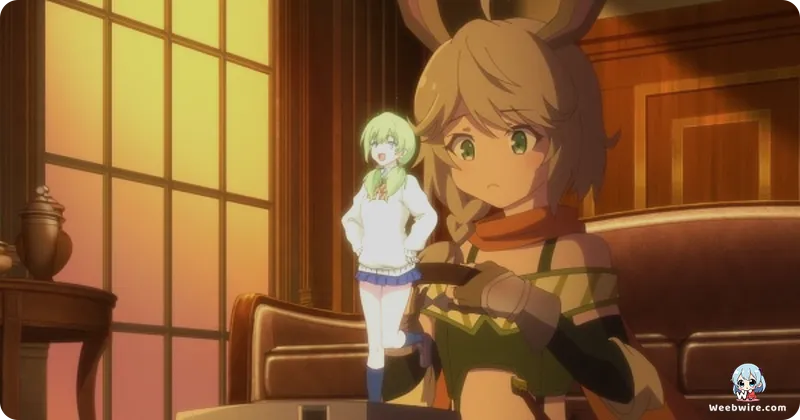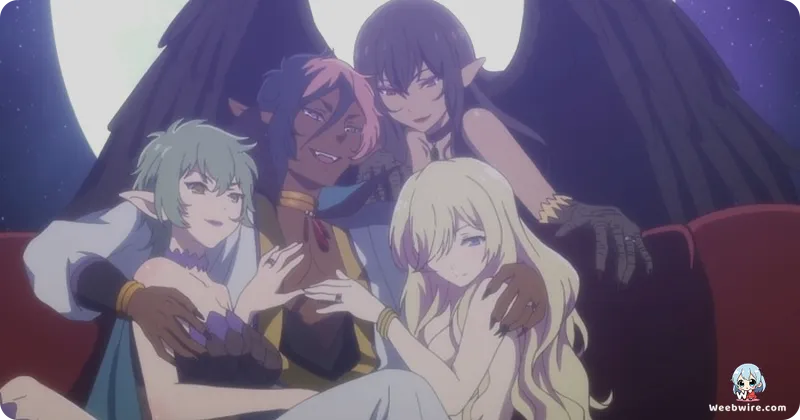Unmasking Diablo: How 'How NOT to Summon a Demon Lord Ω' Masterfully Blends Isekai Power with Social Anxiety Comedy

In the bustling landscape of Isekai anime, where protagonists frequently find themselves endowed with immense power in fantastic new realms, How NOT to Summon a Demon Lord Ω carves out a distinct and undeniably entertaining niche. This particular installment, the second season of the popular series, continued to delight fans with its unique blend of overpowered heroics, self-deprecating humor, and a surprisingly heartfelt exploration of social anxiety. Far from being just another power fantasy, the anime is replete with fascinating tidbits and clever narrative choices that often elevate its outwardly flashy elements.
At the series' heart lies the protagonist, Takuma Sakamoto, a socially awkward gamer who is inexplicably transported into his favorite MMORPG, Cross Reverie, embodying his powerful in-game avatar, the Demon Lord Diablo. The central comedic genius of the show stems directly from this premise: Diablo's fearsome, arrogant persona is merely a facade. Internally, Takuma is a panicking, timid individual struggling to articulate himself, frequently resorting to lines he remembers from his game character to maintain his intimidating front. This constant internal monologue, juxtaposed with his dominant external demeanor, provides endless comedic gold and forms the backbone of the series' humor. It's a brilliant subversion of the typical overpowered Isekai hero, whose strength is often matched by their unwavering confidence. Diablo's true weakness isn't a lack of magic or physical prowess, but an overwhelming social anxiety that makes simple conversations a monumental challenge.
The voice acting for Diablo is a crucial element in conveying this duality, and Masaaki Mizunaka delivers a masterclass performance. He effortlessly transitions between the booming, authoritative voice of the Demon Lord and the internal, often whiny or flustered thoughts of Takuma. This vocal performance is not just an embellishment; it's fundamental to the character's appeal and the show's comedic timing. Without Mizunaka's nuanced portrayal, the humor derived from Diablo's internal struggles would undoubtedly lose much of its impact.

Furthermore, the series cleverly navigates its prominent ecchi elements. While undoubtedly a significant component, How NOT to Summon a Demon Lord Ω often uses these scenes to further character development or drive plot points, rather than existing purely for gratuitous display. The various magical "slave pacts" the characters enter into, for instance, are the source of many of these moments but also serve to bind the main trio—Diablo, the elf Shera L. Greenwood, and the Pantherian Rem Galleu—together in increasingly complex and often endearing ways. These pacts, rather than being simple plot devices, evolve to highlight the growing bonds and trust between the characters, despite their initial contractual nature. The anime frequently uses humor to diffuse potentially awkward situations, ensuring that the ecchi aspects contribute to the overall lighthearted and comedic tone.
Speaking of the supporting cast, Shera and Rem are more than just typical fantasy heroines. Shera, despite her often naive and cheerful disposition, harbors a deep-seated desire for freedom from her royal family's expectations and her brother's control. Rem, initially presented as a stoic and serious adventurer, carries the burden of a powerful demon sealed within her and struggles with her own self-worth. Their individual backstories and personal struggles add layers of emotional depth to the narrative, preventing the series from becoming a mere vehicle for Diablo's antics. Their growth and reliance on Diablo, and on each other, provide a strong emotional core to the otherwise comedic and action-packed adventures.
Another interesting aspect lies in Tezuka Productions' involvement as the animation studio for How NOT to Summon a Demon Lord Ω. While Tezuka Productions is historically renowned for its pioneering work in anime, often associated with classic, family-friendly titles like Astro Boy and Kimba the White Lion, their undertaking of a modern ecchi-fantasy series demonstrates a remarkable versatility and willingness to adapt to contemporary anime trends. This choice of studio for a series with such distinct modern sensibilities is a testament to the studio's enduring legacy and its ability to embrace a diverse range of genres and storytelling styles, proving that even a studio with such a venerable history can deliver on the expectations of a new generation of anime fans. Their animation style, while not overly flashy, provides a consistent and vibrant visual experience that brings the world of Cross Reverie to life, effectively balancing the action sequences with the character-driven comedic moments.
The world of Cross Reverie itself, while featuring many standard fantasy elements, is depicted with enough detail to feel lived-in. Diablo's extensive knowledge of the game's mechanics often leads to clever strategies and unexpected outcomes in battles, further showcasing his unique brand of 'Demon Lord' ingenuity. His ability to exploit game glitches or obscure rules, much like a seasoned player, gives the combat a strategic edge beyond mere brute force. This attention to how a game world might actually function, and how a player could exploit it, adds an additional layer of realism and engagement to the fantasy setting.
Ultimately, How NOT to Summon a Demon Lord Ω stands out not just for its bold ecchi themes or its overpowered protagonist, but for its intelligent humor, endearing characters, and the clever subversion of Isekai tropes. It's a series that understands its genre well enough to playfully twist its conventions, offering a fresh and highly entertaining experience for those who appreciate a good laugh alongside their fantasy adventures. The "Ω" in its title is more than just a symbol; it signifies a continuation and an evolution of the unique formula that made the first season so popular, delivering more of what fans loved while deepening the character relationships and comedic situations.
Credits
How NOT to Summon a Demon Lord Ω
Author
Yukiya Murasaki
Cover Art
Takahiro Tsurusaki
Studio
Tezuka Productions
Publisher
Kodansha
Producers





